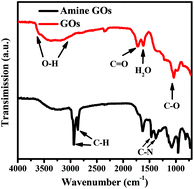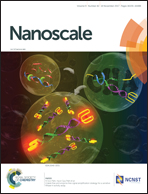Oleylamine-functionalized graphene oxide as an electron block layer towards high-performance and photostable fullerene-free polymer solar cells†
Abstract
Oleylamine-functionalized graphene oxide (GO) has a shallower energy level of conduction band (ECB) and a deeper energy level of the valence band (EVB) as compared to common hole extraction layer (HEL) materials, which make the electron block layer (EBL). Photoluminescence, X-ray photoelectron spectroscopy (XPS), and current density–voltage (J–V) curves with a large reverse bias voltage range obtained under dark conditions are used to determine whether GO layers play important roles in blocking the electron transport to the MoO3/Ag composite anode and prevent MoO3 diffusion into a photoactive layer under light illumination. Moreover, GO inserted between a photoactive layer and an HEL enhances charge carrier transport and collection and avoids the monomolecular recombination between the photoactive layer and HEL. Photovoltaic parameters and photostability measurements of inverted and forward PSCs have shown that upon introduction of GO, the performance and photostability of PSCs are improved. On adding GO to PSCs, the power conversion efficiency (PCE) increases approximately 5% and 4% and reduces the decay ratio to approximately 50% and 65% of the initial value for the inverted and forward PSCs, respectively.



 Please wait while we load your content...
Please wait while we load your content...